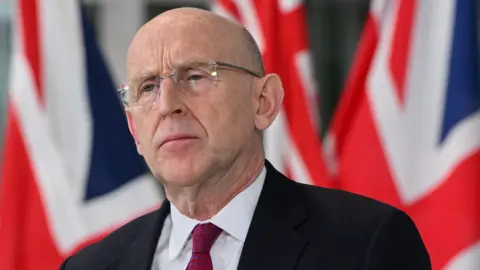**More Than £1bn Allocated for Advanced Battlefield Technology**
In a bold move to enhance military effectiveness, the Ministry of Defence (MoD) has announced an allocation of over £1 billion dedicated to developing innovative technologies aimed at accelerating decision-making processes on the battlefield. This initiative forms one of the central outcomes of an extensive strategic defense review anticipated to be released in full on Monday. The UK government’s commitment to bolstering its defense spending is underlined by a plan to elevate the budget to 2.5% of Gross Domestic Product (GDP) by April 2027, with aspirations to reach 3% during the forthcoming parliamentary cycle.
During a keynote address, the Prime Minister indicated that funding for this military enhancement would arise from a reduction in the foreign aid budget. This decision reflects a significant shift in government spending priorities, with defense now at the forefront as geopolitical tensions escalate worldwide.
As part of the anticipated review findings, the MoD has proposed the introduction of a new “Digital Targeting Web.” This advanced system aims to enhance connectivity among ground troops and vital information relayed via satellites, aircraft, and drones, thereby improving their ability to identify and respond swiftly to enemy threats. Defence Secretary John Healey articulated that the technology outlined in the review will leverage Artificial Intelligence (AI) and cutting-edge software, drawing critical lessons from recent conflicts, particularly the ongoing war in Ukraine, where similar technologies have been successfully employed.
Moreover, the review highlights how Ukraine’s military has adeptly utilized AI and software solutions to expedite the identification and engagement of Russian targets. As such, the UK government recognizes the need to adapt and evolve its capabilities in the face of these contemporary challenges.
The defence review, spearheaded by the newly established Labour government shortly after last year’s general elections, has been characterized by Healey as unprecedented. While the detailed findings of the review are set to be made public in the first half of 2025, an exact release date has yet to be disclosed.
Healey publicly unveiled the results of this review during a visit to the MoD’s cyber headquarters located in Corsham, Wiltshire. This facility serves as the nerve center for the UK’s military cyber operations, overseeing both the prevention and execution of cyber-attacks. In recent years, the UK’s military has encountered a staggering 90,000 cyber incursions attributed to potential adversaries, including heightened threats from Russia and China. Defence officials emphasize that the frequency and sophistication of these attacks are escalating, necessitating a robust response.
Notably, personnel stationed at the Corsham facility revealed their recent success in identifying and neutralizing malware threats aimed at UK military personnel returning from overseas missions. These malware incidents have links to “known Russian actors,” further substantiating the persistent cyber threat landscape.
In light of these developments, the British military has initiated its own offensive cyber operations, mirroring the evolving nature of modern warfare, where digital capabilities are just as vital as physical might. Healey articulated that “the keyboard is now a weapon of war,” signifying the imperative for the UK to maintain a competitive edge within the NATO alliance by being the fastest-innovating military force.
As part of the strategic overview, a new Cyber and Electromagnetic Command will be instituted to supervise the UK’s cyber operations. This command will play a pivotal role in electronic warfare, ranging from intercepting adversarial communications to executing jamming operations against hostile drones.
The additional investment in defense strategies is a manifestation of the government’s commitment to achieving a GDP defense spending rate of 2.5% by 2027. However, it should be noted that NATO Secretary-General Mark Rutte has been vocal about the need for alliance members to consider raising their defense expenditures beyond the 3.5% threshold.
As the UK navigates its future defense posture, the focus will undoubtedly remain on integrating technology and strategy to effectively address the complexities of modern warfare.
**Keywords**: UK defence spending, John Healey, Ministry of Defence, strategic defence review, Digital Targeting Web, AI technology, cyber operations, NATO alliance, battlefield technology.



